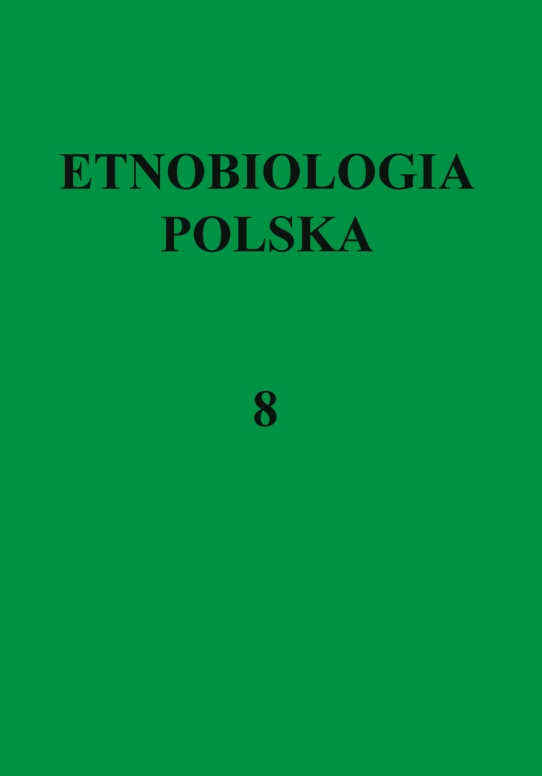Rośliny trujące z terenu Pomorza w dziewiętnastowiecznych zbiorach pastora Georga Gotthilfa Homanna (1774–1851) z Budowa
Słowa kluczowe:
herbarium, poisonous plants, pastor Georg Homann, PomeraniaAbstrakt
The paper comprises two herbaria by Pastor Georg Gotthilf Homann from Budowo (District of Słupsk). The first one from 1811 – “Native Poisonous Plants for Municipal and Country Schools. The Smaller Collection” (Einheimische Giftplanzen zum Gebrauch für Stadtund Landschulen. Kleinere Sammlung) is kept in the Herbarium of the Pomeranian University in Słupsk (SLTC). The other, from 1812, “Native Poisonous Plants and the ones which are Harmful for Household Animals. The Larger Collection” (Einheimische Giftpflanzen, und solche, welche den Hausthieren schaedlich sind. Groeßere Sammlung) constitutes a collection in the Herbarium of Gdańsk Medical University (GDMA). In the smaller collection, the author included 25 charts with vascular plants and one chart of florilegium of a fungus, while in the larger collection – 45 charts with vascular plants and two florilegia of fungi. Each plant had a description including its place of occurrence and its poisonous character, and the Reverend provided an antidote in case of its consumption by people or animals.
Downloads
Bibliografia
Bilz M, Kell S, Maxted N & Lansdown R 2011. Europaean Red List of Vascular Plants, Luxembourg, pp. 19-43
Dreyfeldt A 1931. George Gotthilf Homann, ein Pommerscher Botaniker vor hundert Jahren, Dohrniana 11: 97-135
Dreyfeldt A 1932. Von Pastor Homann in Budow, Ostpommersche Heimat. Beilage der Zeitung für Ostpommern 20: 4
Homann G 1828, 1830, 1832. Flora von Pommern, oder Beschreibung der in Vor- und Hinterpommern sowohl einheimischen als auch unter freiem Himmel leicht fortkommenden Gewächse; nebst Bezeichnung ihres Gebrauches für die Arznei, Forst- und Landwirtschaft, Gärtnerei, Färberei u.s.w. ihres etwanigen Nutzens oder Schadens. Hendeß, Köslin.
Homann G 2016. Rośliny trujące Pomorza, Muzeum Pomorza Środkowego w Słupsku, 7-192
Kruszelnicki J. 2001. Taxus baccata Cis pospolity. In: Kaźmierczakowa R, Zarzycki K (ed) Polska czerwona księga roślin. Paprotniki i rośliny kwiatowe. Instytut Botaniki im. W. Szafera PAN, Kraków, pp. 68-70
Markowski R & Buliński M 2004. Ginące i zagrożone rośliny naczyniowe Pomorza Gdańskiego. Acta Botanica Cassubica Monographiae 1: 5-75
Mirek Z, Piękoś-Mirkowa H, Zając A & Zając M 2002. Krytyczna lista roślin kwiatowych i paprotników Polski. Biodiversity of Poland 1: 9-442
Zarzycki K & Szeląg Z 2006. Czerwona lista roślin naczyniowych w Polsce. W: Mirek Z, Zarzycki K, Wojewoda W, Szeląg Z. (ed) Czerwona lista roślin i grzybów Polski. Instytut Botaniki im. W. Szafera PAN, Kraków, pp. 9-20
Żukowski W & Jackowiak B 1995. Lista roślin naczyniowych ginących i zagrożonych na Pomorzu Zachodnim i w Wielkopolsce. In: Żukowski W, Jackowiak B (ed) Ginące i zagrożone rośliny naczyniowe Pomorza Zachodniego i Wielkopolski. Prace Zakładu Taksonomii Roślin 3: 9-92
Pobrania
Opublikowane
Jak cytować
Numer
Dział
Licencja
Prawa autorskie (c) 2018 Etnobiologia Polska

Utwór dostępny jest na licencji Creative Commons Uznanie autorstwa – Użycie niekomercyjne – Bez utworów zależnych 4.0 Międzynarodowe.


